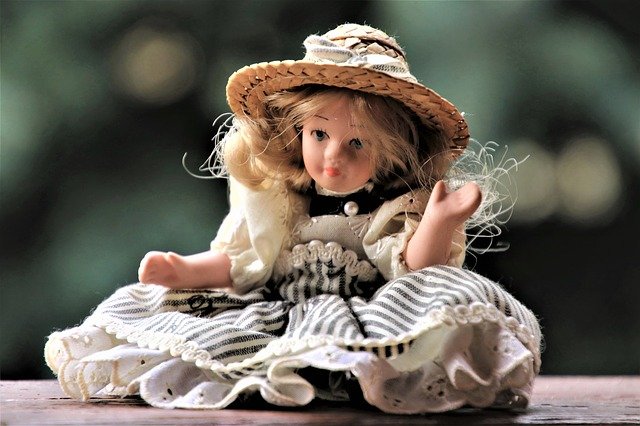By Tim Lambert
Early Dolls
Girls have played with dolls for thousands of years. Pottery dolls have been found in Ancient Egyptian tombs. Girls in Ancient Greece played with dolls made of baked clay or wood. Some of them had movable limbs. However, when Greek girls grew up they dedicated their dolls to a goddess. Roman girls did the same.
Girls also played with dolls in the Middle Ages. 15th-century German woodcuts show doll makers at work. In the 16th century, wooden dolls dressed in miniature clothes were still popular toys.
The first doll house was made in Germany in 1558. It was made for Duke Albrecht V of Bavaria. Dollhouses were popular with the wealthy in the 17th century and 18th centuries. However, at that time dollhouses were not toys. Instead, they were for display.
However, in the 17th and 18th-century girls continued to play with wooden or rag dolls. Wax dolls were also popular. At that time they were called toy babies and dollhouses were called baby houses. However, by the 18th century, they were called dolls. (Doll was originally short for Dorothy).
Modern Dolls
With industrialization in the 19th-century dolls began to be mass-produced. Ragdolls were still made so were wooden and wax dolls but in the 19th-century dolls were often made of papier-mache or ceramic. From 1863 dolls were sometimes made of celluloid, a form of plastic. In the 19th-century dollhouses became toys for children to play with.
Meanwhile, in 1823 Johann Maelzel made the first talking dolls. They said ‘mamma’ and ‘papa’. In the late 19th century dolls prams were made. Kewpie dolls went on sale in 1912.
After the Second World War dolls were commonly made of vinyl. Barbie dolls were invented in 1959 and Action Man went on sale in Britain in 1966. Dunster Doll Museum opened in 1971.

Last Revised 2023